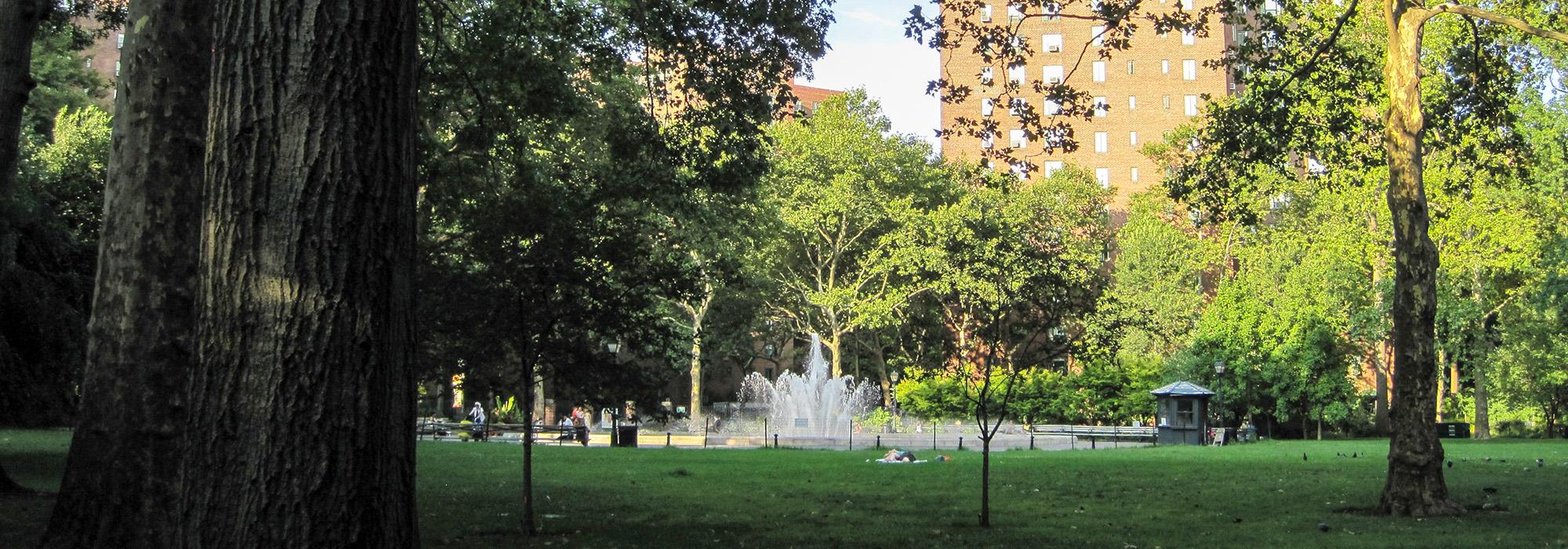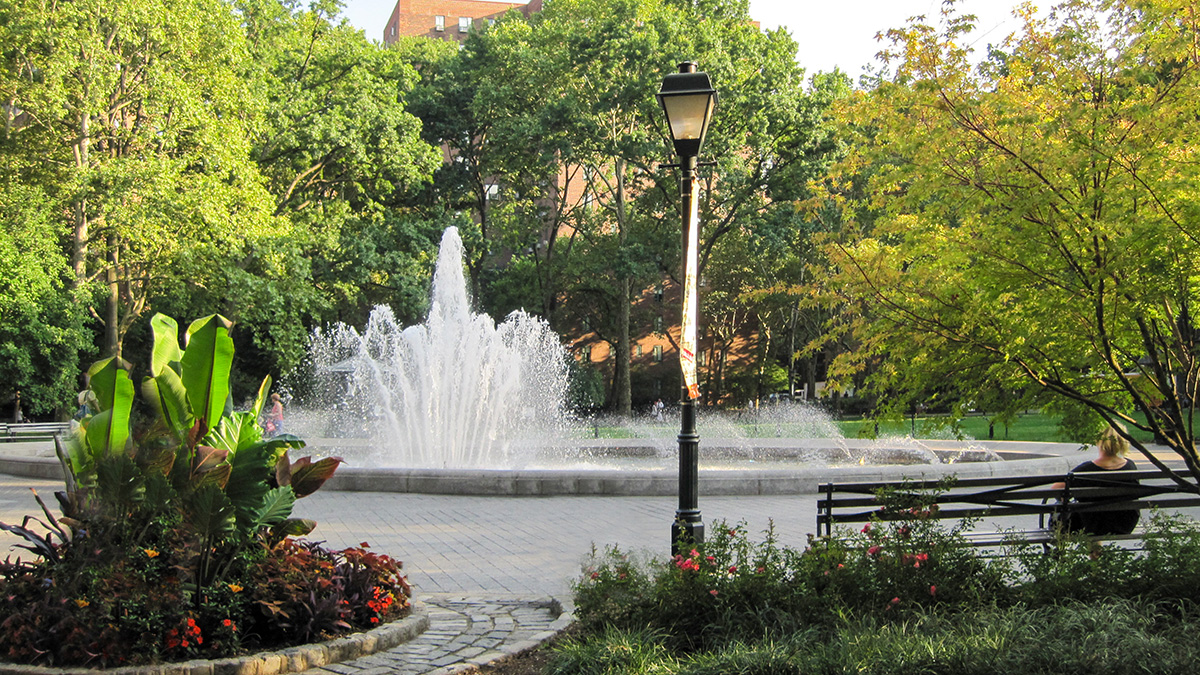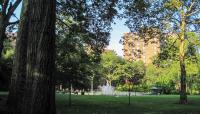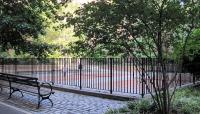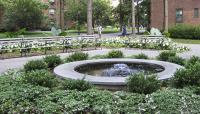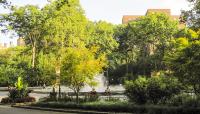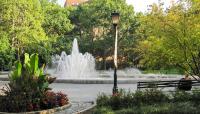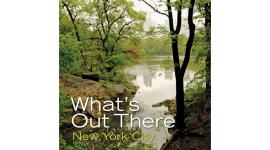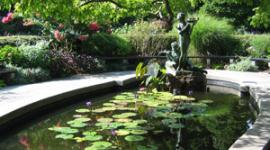Landscape Information
Located between East 15th and East 17th Streets, this four-acre square has been the centerpiece of the surrounding neighborhood since its completion. Once a part of the former 120-acre farm and estate of Peter Stuyvesant, the last Dutch Director-General of the colony of New Netherlands, the site was sold by the Stuyvesant family to the City of New York for use as a public park in 1836. By the time the park was opened to the public in 1850, it featured a cast iron fence (1847) and two central fountains (1848), which were replaced by smaller fountains in 1884. The current passive park is a result of Parks Commissioner Robert Moses’ 1930s campaign to rehabilitate New York’s public parks, and was redesigned by Gilmore Clarke in 1935.
Bisected along its north-south axis by 2nd Avenue, each half is symmetrical. At the center of the western and eastern sections are fountains bordered by flower beds and a low, iron fence. This is then surrounded by an octagonal central sitting area, lined with benches and paved in hexagonal blocks of granite and bluestone. The park includes two notable statues of Peter Stuyvesant by Gertrude Vanderbilt Whitney (1941) and Antonin Dvorak by Ivan Mestrovic (1997). The square is accessed by gates centrally located along each boundary. Rehabilitation efforts undertaken in 1982 included the restoration of the two 1884 fountains, preservation work on the cast iron fence, the re-introduction of bluestone sidewalks, and the renewal of historic plantings, including lawns, shrubs, flowerbeds, and original tree species, such as English elm and little-leaf linden. The Stuyvesant Square Historic District, inclusive of the square, was listed on the National Register of Historic Places in 1980.



